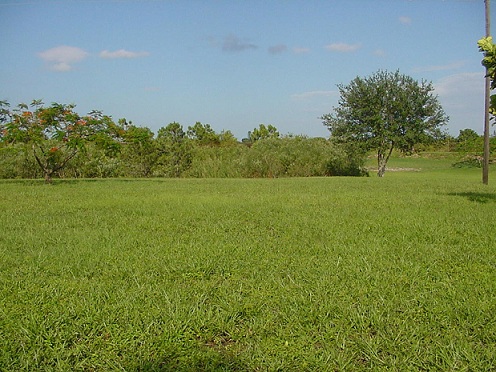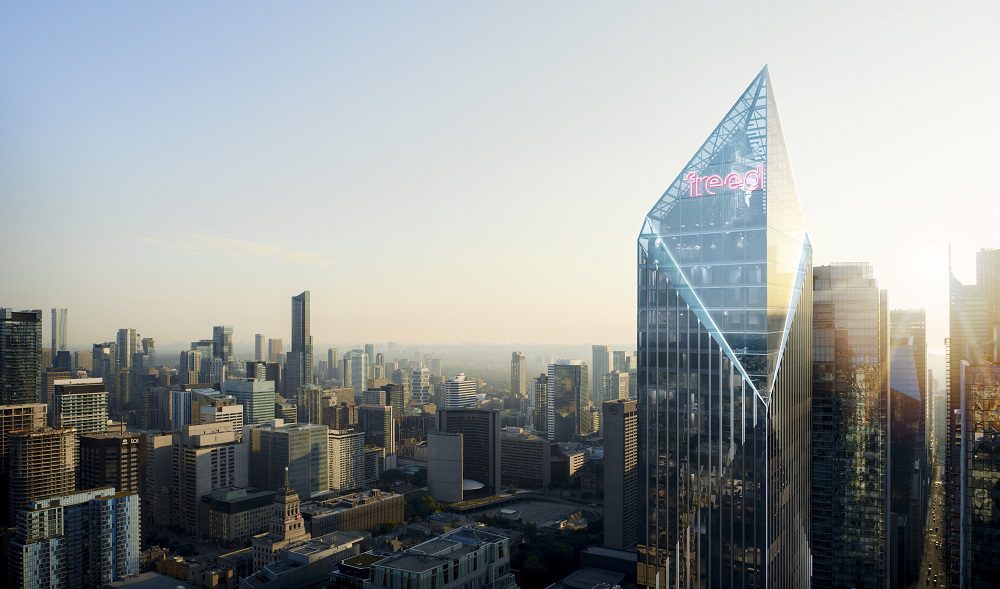On Tuesday afternoon, I drove through my old stomping grounds in Park City, Utah and saw what has become of the city I last visited in 2001.
The real estate market boomed, then crashed, and now they’re still left sifting through the rubble…

A really cool thing happened over the last few days. The stock market crashed.
I say this is “cool” because, to be perfectly honest (and not to sound like a know-it-all), I went very short on the market six weeks ago and I proved to be correct.
Meh. Call it “throwing darts” and I happened to throw a good one, if you want.
The Dow Jones dropped over 700 points last week, and then over 600 points on Monday alone. It was like watching a slow car wreck, and despite the 400 point gain on Tuesday when investors were searching for deals and buying back the market, I’d say more 200+ point drops are on the way.
Although, perhaps more 200+ gains are on the way too.
Then maybe more 200+ point drops, then gains, then drops, and so on.
The stock market is exceptionally volatile, and the events of the last seven days magnify this in the brightest light possible.
I’ve always maintained that real estate is a somewhat “safer” investment than buying stock in publicly traded companies simply because we don’t see the same sort of volatility in the real estate market that we see in the stock market.
I was short on a few US bank stocks that dropped 20% on Monday alone. Where do you see this happen in the real estate market? Even in the most dire times, in the most miserable real estate markets, you won’t see that kind of drop in one single day.
But it’s also the volume of shares of publicly traded companies that really differentiates stock from real estate in terms of an investment.
Real estate is very unique and very specific, and more often than not, you won’t be dealing with a “like product.” Sure, you can walk into a sub-division and find 100 of the same homes, but those cases are infrequent, and non-existent if you consider Toronto.
The ease with which stocks are bought and sold also contributes to the volatility, as a rampant panic can set off the market quicker than it ever could in real estate. You simply couldn’t see 5,000 people all sell their houses in the same day, in the same small town.
But in some places and in some cases, the stock market and the real estate market draw closer than we Torontonians are used to seeing.
Case in point: Park City, Utah.
Back when I was a very deprived, neglected, tough-luck child, my family would go skiing in Park City most winters. We watched the town grow from a very quaint, lovely ski-area, to a pretentious, snobby, over-bought speculation-town.
From 1988 when we started skiing in Park City to 2001 when I last touched ski to snow, the town boomed with real estate development, and speculators were all over the place.
The Winter Olympics in 2002 only further fueled the boom, and many people watched and suggested that the town was destined for a real estate collapse.
The optimists kept buying, however. If you bought a house for $200,000 and saw that double to $400,000, how are you going to listen to anybody who tells you that $450,000 isn’t just around the corner?
On Tuesday of this week, I returned to Park City, Utah for the first time in a decade.
My girlfriend and I drove along the Interstate-80 and pulled up at Kimball Junction, and I could already “feel” the difference.
The highways were wider and the intersections were larger. There was a giant ten-light stop-light above our heads that was never there before. In fact, I think that used to be a “Yield” sign!
Coming in along I-80 I could see thousands and thousands of townhouses and condos that were never there back in the 80’s or 90’s, and everywhere you looked, you could see “FOR SALE” signs.
We passed Kimball Junction and began to drive the six miles into Park City, and I marvelled at the rampant development! I noticed what looked like a small “Main Drag” or “Main Street” to my left, and there was a giant stone wall that said “REDSTONE.” It was like somebody created a little town!
Here in “Redstone,” there were all kinds of townhouses, condos, and then a whole sub-division of beautiful sprawling homes! There was a lot of infrastructure (food, big-box, retail), and that stone entrance that said “Redstone” gave the street a “Main Street” feel.
What a feel-good story!
Except, about forty seconds later when we passed by Redstone, there was nothing but farm land.
This is why a real estate crash was imminent.
There’s vacant land as far as the eye can see!
If you’ve got people literally “lined up” to speculate on real estate in Park City and the surrounding area, well boy howdy, you’ve got good ole farm land to build on!
There are hundreds of thousands of acres of farm land that can be bought and a new “town” can be built right then and there!
This makes an absolute mockery of supply and demand, and merely sets the table for market saturation.
When people are speculating and seeing their investments gain 35% paper profits per year, it’s completely meaningless unless they sell and take those profits! Factor in the developer who is building 10,000 homes up the road, and a painful truth is being hidden.
This is a completely different situation, however, to what we see in the Toronto housing market.
Now it is true that developers can continue to build as many condominiums as they want into the sky, but as far as actual freehold houses are concerned, well there’s no more land to build on!
And keep in mind – I’m talking about Toronto proper, not the GTA, and if you want to somehow fit your little Ajax house into this conversation about prime Toronto real estate, then take it elsewhere!
What differentiates real estate in Park City from that of Toronto, in my opinion, is that there is always the ever-present ability to add supply in Park City, whereas you can’t do that in Toronto.
There’s no land to build on in Toronto, and although a developer can tear down a giant car-wash and build a 400-unit condo tower, that takes years and years to do (zoning, permits, sales, building, occupancy).
In Park City, there are thousands of acres readily available to build on – right next door to a small pocket of 400 houses!
It’s tough for a product to keep its value when the market for that product is easily saturated.
I went by our family’s old home at 858 Red Maple Court, and I saw that some speculator had completely renovated the outside of the structure and made a crummy, split-level home with aluminium siding look like an authentic stone & timber home. Whoever flipped this house must have made some serious money, but they got in, got out, and moved on.
I fear that many speculators in this area were caught off guard by the over-supply of homes after the 2002 Winter Olympics, and got caught holding real estate that was the same as what’s across the road, up the street, down the way, and being built as fast as a 1960’s sub-division in Kansas.
I also think that people get caught off guard by how much emotion is involved in the stock market, and this is why I think the volatility is unavoidable.
I’m a chartist, or a “technician” when it comes to stock market investing. And I don’t want to offend the fundamentalists who pour thousands of hours into research on a particular company when I say that I’m not sure all that research matters.
I think that panic, fear, hope, dreams, and all human emotions are what drives the stock market and can turn it on its head at any given time. Tell me that people were thinking rationally when they purchased tech-stocks that didn’t make any money, or drove simple blue chip stocks up to P/E ratios of 300.
I think that the stock market is volatile simply because it’s driven by emotion, and because of the volume of the product and the ease of entry into the market.
If you’re holding Toronto real estate right now, I think you’re better off than those who are either fully invested in the stock market, or those that bought in Park City, Utah.
Toronto real estate isn’t as volatile as the stock market and never will be, and there’s no way to saturate the market with homes like we’ve seen in Park City or thousands of other cities across North America.
So, my regular readers know that sometimes – I like to poke the bee-hive. I’ve tried to combine a few ideologies here with some current events, and I’m hoping the discussion will continue through to Friday when I get around to writing another blog post!
I’m going to be in Moab, Utah on Wednesday and Thursday – climbing to the top of this:

It’s going to be 105 degrees.
Suddenly all that Toronto humidity in July doesn’t seem so bad…































Ralph Cramdown
at 8:46 am
Miami, San Francisco, London UK? All places that they’re not making any more of, with international brand recognition, and all have had 30% off sales recently, with Miami getting closer to BOGO.
Kyle
at 9:30 am
US vs Canada Real Estate:
Another big difference between US and Canada, is that in the US a lot of the demand for housing was artificial. Droves of people who barely made enough to rent apartments were given mortgages for $750K homes. In Canada we have far stricter lending requirements, we have max GDS ratios, max loan to value ratios, min downpayments and people actually have to prove their income before getting approved here.
Housing vs Stocks Markets:
Housing and stocks both involve emotions, but i would say very different emotions. With stocks it’s pretty simple: greed and fear, so when something happens people tend to move like a herd. The emotions in housing are far more complex: people’s identities are linked to their homes, ask anyone and they will tell you their home represents more than just shelter. When times become tough one of the last sacrifices people make is to sell the home, they will sell their stocks, tap their retirement savings, cancel vacations, cancel cable, eat mac & cheese, even rent out rooms before they sell their homes. Even when real estate does crash, those that can afford to make payments usually choose to live with negative equity over selling their homes. Can you imagine keeping a stock that was worth negative? Of course not, there’s no such thing. My point to all this is charts, graphs and historic lines of best fit do not work in real estate.
Chuck
at 7:12 pm
@Kyle – the gasoline on the U.S. real estate fire was the fact that you could write off your mortgage interest.
Joe Q.
at 10:13 pm
The standard American fixed-rate mortgage gives the borrower a locked-in interest rate for the whole amortization. AFAIK this is virtually unheard of in Canada.
It’s difficult to compare stocks and housing, but one other very important factor is the leverage applied to housing purchases. People rarely borrow multiples of their annual income to get their retirement savings going, but they routinely do so to buy homes. The leverage is an important psychological factor both on the way up and on the way down.
It’s interesting that despite the much looser lending standards that the USA had during the pre-crash era, we in Canada have managed to get to the same home-ownership level as the USA had at the peak.
Jeremy
at 12:35 pm
I think you may be underestimating the degree to which the more expensive homes in the Toronto market need a strong “stock market” to find a buyer. How many of the jobs paying the higher salaries required to afford these homes are linked to the stock market, either directly or indirectly?
Kyle
at 9:13 am
If you look at the TSX60 since 2007 it is down. If you look at Toronto real estate prices for the same period, it has been WAY up. I don’t think the correlation between the two is anywhere near as strong as you think. Particularly for the higher end houses, where the correlation is negative. As the world markets have slumped and become more volitile, there has actually been an increase in demand for super high end Toronto real estate, as foreign buyers view it as a stable, safe long term investment.
Martin
at 12:56 pm
Phoenix AZ, is another great example of an endless supply of land creating downward pressure on prices: desert all around.
If you look at Montreal, Vancouver and Toronto, all three cities have natural barriers (mountain and water) that make it impossible to expand. Add Toronto’s Green Belt and you’ve got good downside protection for Toronto housing prices.
Ralph Cramdown
at 6:45 pm
Sure, things are different here. Ask your mortgage broker which of the large Canadian banks offer cash back mortgages, and which one says “you don’t have to prove your income so long as you have… 10% equity…”
Appraiser
at 10:10 pm
You don’t know what you’re talking about. Cash back mortgages have some of the highest qualify standards around. 10% equity lenders for “hard-to-prove” income earners? Name one and provide a link. The ones I know of want 25 to 35% down payment minimum. Pure garbage.
You sound like a renter that never applied for a mortgage in your life, or have any real world experience aside from bad-mouthing real estate.
Ralph Cramdown
at 9:52 am
There’s a reason I put quote marks around the quote. I copied and pasted it directly from a big 5 bank’s website.
Joe Q.
at 9:58 pm
https://www.cibc.com/ca/mortgages/self-employ-rec-mortg.html
What a load of hooey!
at 11:32 pm
There’s a shortage of land in Canada?! Oooh that’s a good one…….now I’ve heard everything…….PT Barnum would be impressed!
David Fleming
at 12:51 am
Toronto, not Canada.
Don’t put words in my mouth…
What a load of hooey!
at 10:39 am
Whenever you demarcate an area of land, it goes without saying that there will be finite space available for development – whether it be Toronto, Saskatchewan, or all of Canada.
This in no way, however, means that the prices within any given demarcation cannot fall and therefore must remain stable or rise. Doesn’t make sense. Prices in Manhattan have risen and fallen numerous times throughout the decades.
Geoff
at 9:56 am
Yeah, have to agree that this post is a little more ‘stir the pot’ than it is logical. Fact is owning stocks typically pay you to hold them (dividends) and owning a house typically requires you to pay it (mortgage + maintenance). But it’s also true you have to live somewhere. I own both a home in 416 and about $100K in stocks (not impressive, I know but I’m 36 with a 4 year old) but I know that most people’s net worth are in housing which is not good. In investing terms, a house is a highly leveraged purchase with unknown additonal costs, is extremely illiquid (I can sell 40% of my stocks tommorow.. .can I sell 40% of my house?), it’s value is unknown until the day of sale, and will cost me a lot more than $10 to trade it.
That said, I love my house.
I think it’s misleading to imply that housing isn’t an emotional purchase – it’s the most emotional purchase of anyone’s life.
buk
at 3:50 pm
i hope you sold all your short positions.
lui
at 9:41 am
there is a serious shortage of land for large developers in Toronto,the last pre construction I bought the developer bought 10 houses in this nice area of Toronto and fought tooth and nail to get it approve…took almost 4 years to get it started..
Potato
at 3:07 am
I think the take-home message from your little anecdote is the opposite of what you’re making it out to be: land scarcity has very little to do with short-term valuations. Was land any more or less scarce in 1989 in Toronto than it was in 1992? Is it any more scarce today than it was in 2003?
Even in Park City, Utah, with abundant land for development all around, prices got over-heated and later corrected, even though it should have been obvious that a bubble was brewing. How much easier then is it to then inflate prices beyond fundamentals in a place like Toronto, where the fundamentals aren’t quite staring you in the face so dramatically as the cornfield next-door?
Kyle
at 11:14 am
Are you seriously questioning whether the supply of land in Toronto has changed since 1989? Land in Toronto is WAY more scarce today than it was back then. In 1989 Downtown Toronto was filled with surface parking lots. In 1992 King West and Liberty Village was a big swath of industrial lands. Try buying a vacant lot there now. As the land became more scarce, prices started to rise. King West’s first new developments were townhouses. Do you think any developer today is going to make a penny building townhouses after dropping a bundle to buy a piece of land in downtown T.O.? Demand for housing in the core has been increasing, and supply of land has been decreasing. Frankly the “fundamentals” for why Toronto prices have been rising couldn’t be any more obvious.
Joe Q.
at 9:56 pm
I think you may be missing his point, Kyle. Obviously house prices will trend upwards over the very long term if the demand for housing / land exceeds supply, as is the case in Toronto, but within this long-term trend there are years- or decades-long “boom and bust” cycles that occur for very different reasons. Potato’s comparison of the last Toronto bubble peak (1989) to its aftermath (1992) is a good case in point — it certainly wasn’t any sudden availability of land that caused prices to go down.
I feel similarly about the “immigration argument” (i.e. “there are thousands of people moving to Toronto every year, so house prices will always go up”). It’s true over the very long term, but overall there is very little correlation between immigration and house prices on a year-to-year basis.